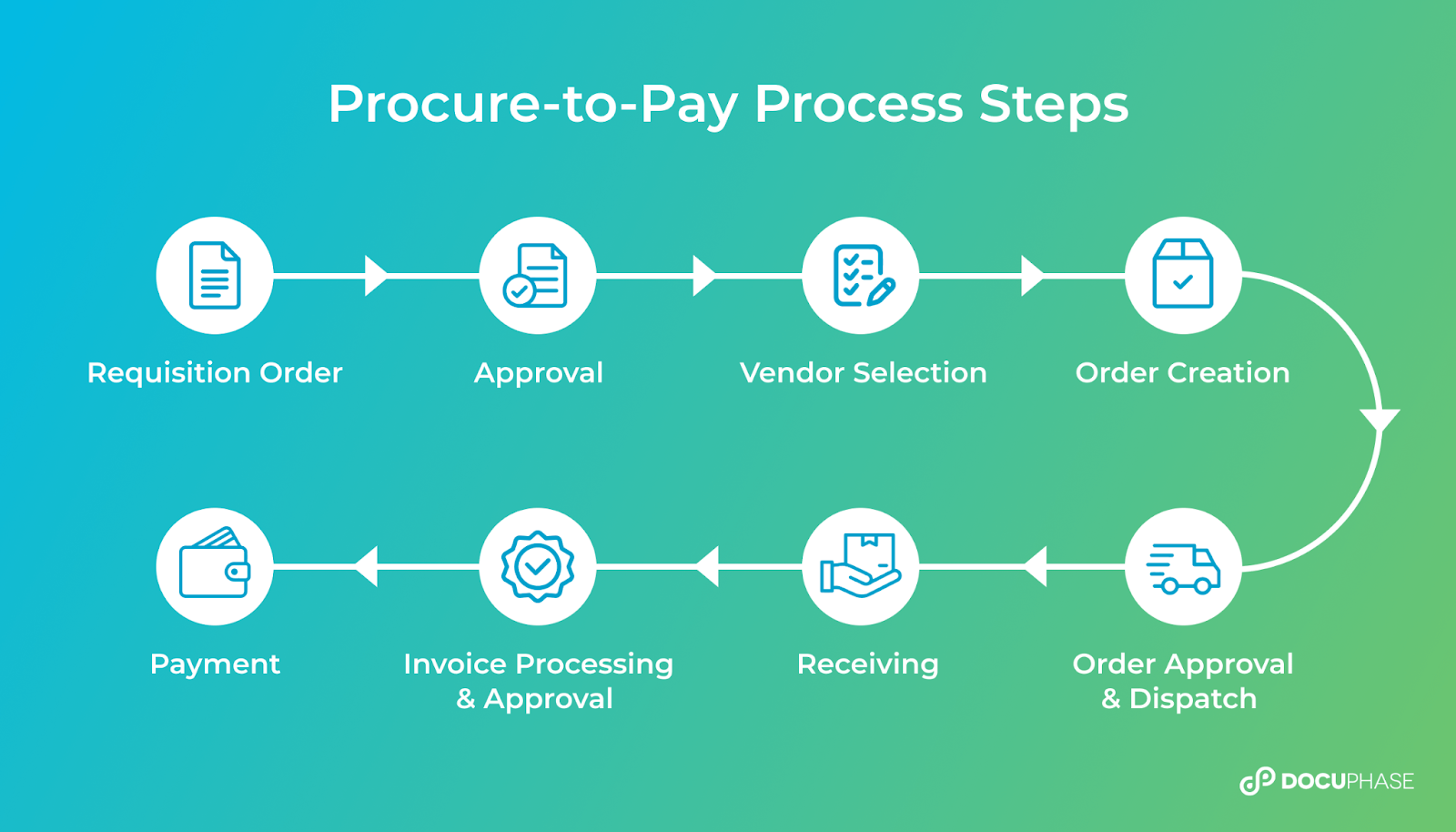How To Implement A Procure To Pay (P2P) System
Let’s say your company is still in a startup mode with high growth and your purchases only go through a few buyers over email. There are little barriers in place to your purchasing methods, and procurement is relatively simple and easy.
Now, your company has continued to exceed in its growth and your CFO has decided its time to implement a Procure to Pay (P2P) system to focus on optimizing the company’s spend and ensure the needed governance policies are in place. Sounds simple enough, right? Let’s jump right in.
Key Process Steps and Implementation of a Procure to Pay (P2P) System
As you venture into this new system, there are a few concepts that need to be understood alongside a series of steps to conduct. First, let’s look at the key process steps in the P2P system:
Step 1: Purchase Request (PR) is Submitted by Requestor
Step 2: Workflow for Approval: Purchasing, Management, and Finance (FP&A) Review
Step 3: Purchase Order (PO) Creation
Step 4: PO Sent to Supplier
Step 5: Supplier Invoices
Step 6: Payment Per Agreed Payment Terms
Now, let’s take a look at the recommended steps to implement the P2P System:
Deciding on Stakeholders and Sponsors - The main stakeholders that should be involved would be Procurement, Finance (FP&A and AP), Legal, and key business owners who spend money for the company. The sponsors should be Finance and the organization that Procurement reports to - which will usually be Operations or Finance.
Business Requirements Definition (BRD) - Complete the BRD with the stakeholders to define the Procure to Pay (P2P) process steps. The BRD will be the key document to validate that the P2P system you choose meets the functional requirements.
Defining Key Metrics - The key metrics for your business will be dependent upon your organization, but a few metrics to consider include implementation timeline, compliance to procurement policy, cycle time from PR generation to PO execution, and cost savings.
Generate/Update the Procurement Policy - The procurement policy will need to be updated, with key areas including whether a contract is required, determining infosec review, when Pcard will be allowed for payment, signature authorization levels of PR, dollar threshold when a PO is required vs expensing, and deciding when procurement needs to get involved to optimize the sourcing deal.
Obtaining Budget Approval for the P2P system from Finance (FP&A) - Finance will be required to sign off on the budget for the P2P system.
Sourcing Process to Locate Best Fit P2P System - The key sourcing criteria to consider would be system fit to BRD, customer support/responsiveness, ease of implementation/integration of other systems, references, supplier financial stability, and ultimately cost.
Understanding the Data Model - It is critical to understand the data model that supports the P2P system. These key fields are cost center, general ledger (GL account), vendor, PR requestor, price, etc.
Completion of P2P System Integration - The organization hopefully has verified the compatibility between the P2P system and other systems, in which the integration of other systems such as CLM (contract system), Finance, and HR are now complete.
Testing - Have key business users utilize and test the system to ensure for adequate functionality. It may be beneficial to come up with test scripts to ensure all P2P functionality will be tested.
Establishing Training Sessions - Setup training sessions as needed and it may be beneficial to possibly even create a short P2P training video.
Implementation Timeframe - The implementation date should be approved by everyone and within the timeframe established. You don’t want to implement at the wrong time, such as quarter end.
Once the system is implemented, you will need to have ongoing support after going live. There will be learning curves and questions about the system that will need to be answered quickly. After about three to six months, complete a post-mortem to validate the metrics have been achieved.
Getting Your Pay to Procure (P2P) System Started
Implementing a Pay to Procure (P2P) system is vital in supporting good spend practices as your company continues to grow. If you are seeking to implement a P2P system but are unsure where exactly to start, it may be beneficial to seek outside counsel and have another set of eyes overseeing your P2P implementation strategy.
Mike Glass runs GPC (Glass Procurement Consulting), a procurement consulting firm focused on optimizing a company's spend. Mike has worked in senior procurement management positions at NVIDIA, Google, Meta, Fitbit, and Flextronics. Mike would enjoy getting your insight on any procurement topic, feel free to contact Mike at mike@glassprocurementconsulting.com.


